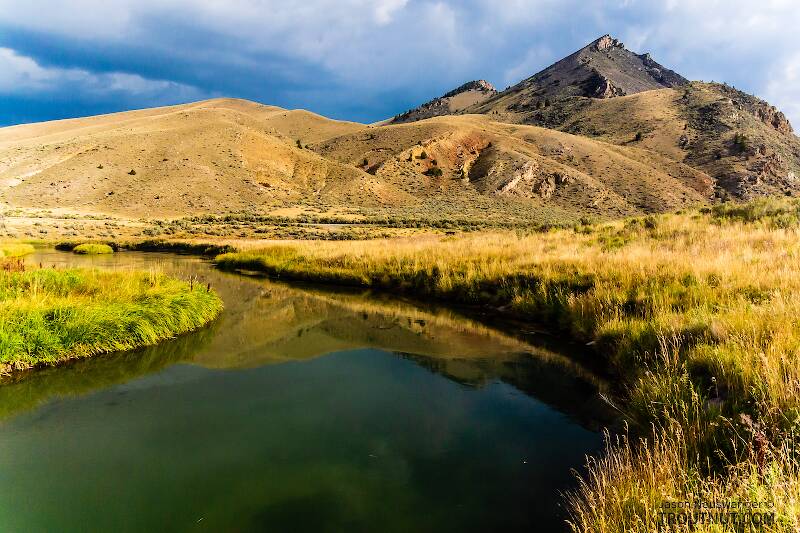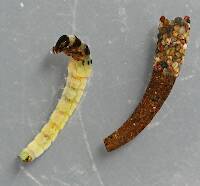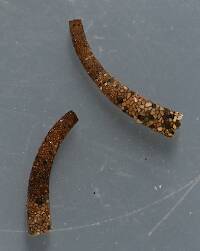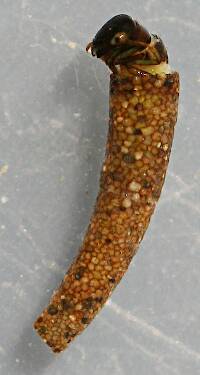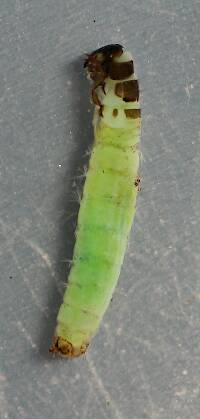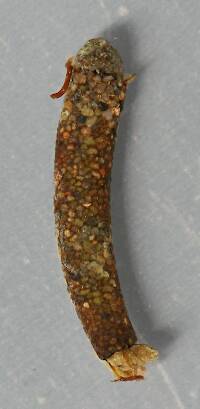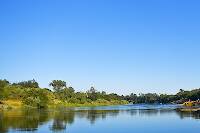
Salmonflies
Pteronarcys californica
The giant Salmonflies of the Western mountains are legendary for their proclivity to elicit consistent dry-fly action and ferocious strikes.
Featured on the forum
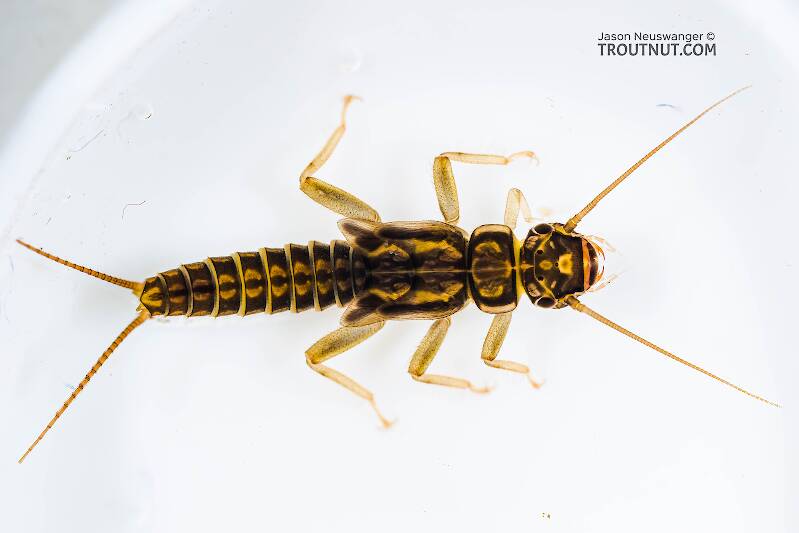

Troutnut is a project started in 2003 by salmonid ecologist Jason "Troutnut" Neuswanger to help anglers and
fly tyers unabashedly embrace the entomological side of the sport. Learn more about Troutnut or
support the project for an enhanced experience here.
Quillgordon has attached these 5 pictures. The message is below.
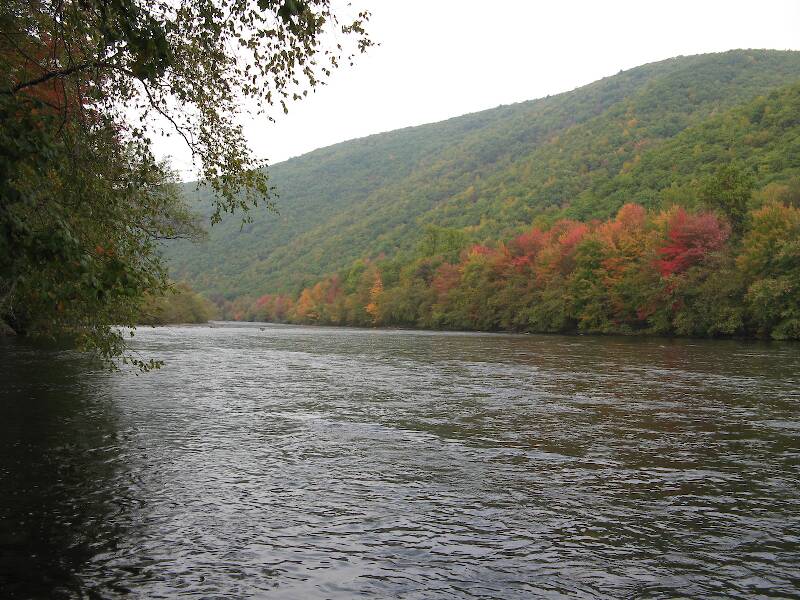
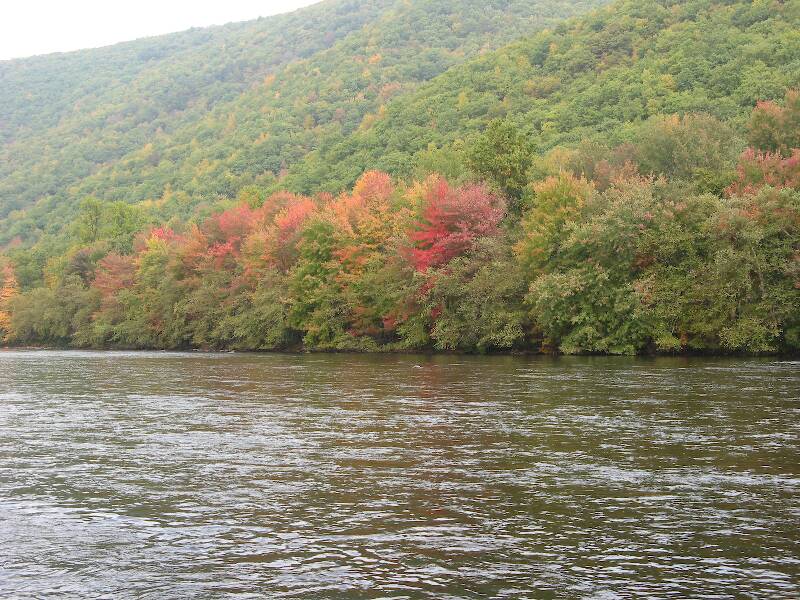
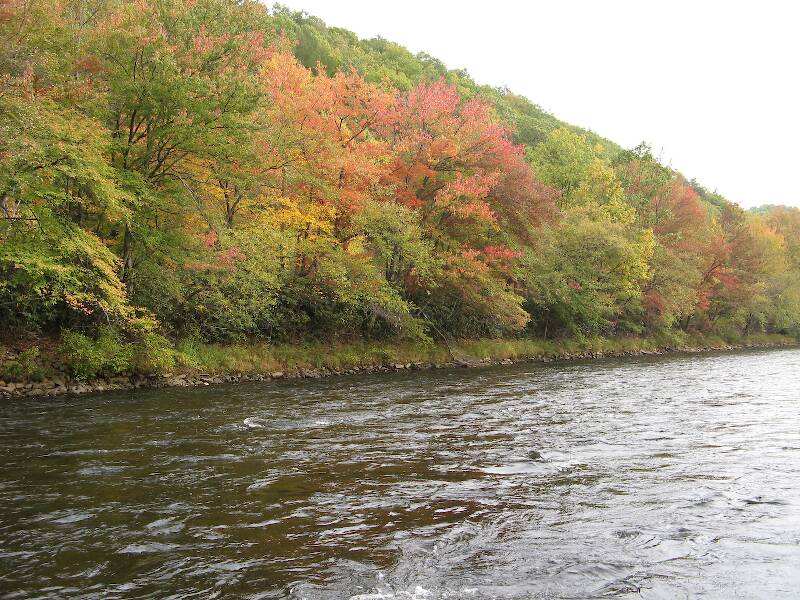
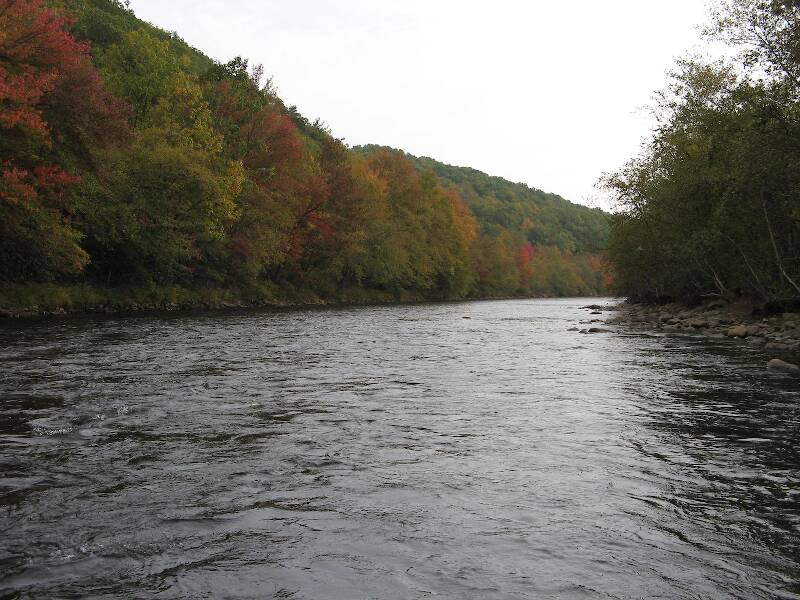
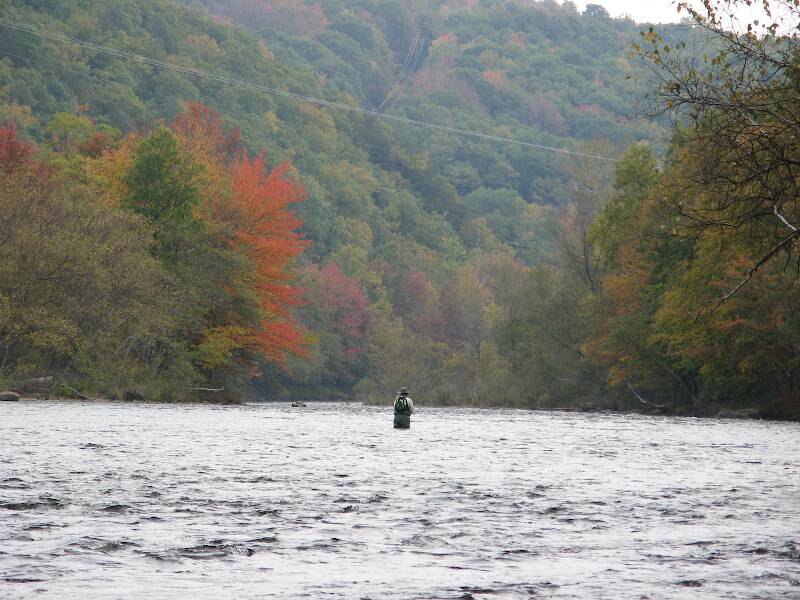
Quillgordon on Oct 25, 2007October 25th, 2007, 1:43 am EDT
This was my first time on the Lehigh and I took my new camera along.
I had more success with the camera than the fish .... LOL.
Camera @ Canon A710IS
I had more success with the camera than the fish .... LOL.
Camera @ Canon A710IS
Flyfishing is a state of mind! .............. Q.g.
C/R........barbless
C/R........barbless
CaseyP on Oct 25, 2007October 25th, 2007, 4:51 am EDT
nice river, John, and very encouraging pictures! who thought we'd be happy that there were clouds, but this rain is sure welcome.
a question to go with that big river: how do you decide where to cast to? on a smaller stream, one can look for bends and bars and holes and rocks and those wonderful triangular tongues of riffley water that fish like to hide under. on a bigger river like this beauty you've shared, do you just paint the water and hope? when it's cloudy, it's much harder to see the bottom, i find.
a question to go with that big river: how do you decide where to cast to? on a smaller stream, one can look for bends and bars and holes and rocks and those wonderful triangular tongues of riffley water that fish like to hide under. on a bigger river like this beauty you've shared, do you just paint the water and hope? when it's cloudy, it's much harder to see the bottom, i find.
"You can observe a lot by watching." Yogi Berra
Quillgordon on Oct 25, 2007October 25th, 2007, 5:27 am EDT
Casey,
This was the first big river I have fished, so I really can't answer your question. That section is a 'flat run', which is the type of water I like to fish. It was faster than I am accustomed, so it was a new venture for me. There were a few 'large boulders' out there, so I concentratred around them.
I wanted to fish the other bank, but I couldn't get out any further, so that prevented that. There was little or no insect activity, so that didn't help. I think you just have to fish the water that you feel 'confident' in.
John
This was the first big river I have fished, so I really can't answer your question. That section is a 'flat run', which is the type of water I like to fish. It was faster than I am accustomed, so it was a new venture for me. There were a few 'large boulders' out there, so I concentratred around them.
I wanted to fish the other bank, but I couldn't get out any further, so that prevented that. There was little or no insect activity, so that didn't help. I think you just have to fish the water that you feel 'confident' in.
John
Flyfishing is a state of mind! .............. Q.g.
C/R........barbless
C/R........barbless
CaseyP on Oct 25, 2007October 25th, 2007, 9:42 am EDT
say, boulders would sure make sense. thanks! once i was shown a wet fly technique that has one in the middle of the river facing downstream. we cast first to the right and let the fly go downstream and rise to the surface, and then cast to the left. after three tries each side, one stepped forward (downstream) three long steps, and tried again. we caught nothing and the wading was very tricky, so i was not sold on the technique. i did become a strong believer in wading staffs that day, though! think i'll stick to searching out boulders ...
"You can observe a lot by watching." Yogi Berra
Gene
Posts: 107
Posts: 107
Gene on Oct 25, 2007October 25th, 2007, 10:20 am EDT
Casey:
The secret to fishing a big river versus a small stream which for some reason I haven't read in too many places in the fly fishing literature (because that is a great question which many people have)is simply this:
1) break the stream down into many small streams
2) you can do this a number of ways by natural features such as currents, rocks, substrate changes, current speeds etc.
3) then use a methodical numerical approach to fish the stream. What I mean by this is actually start at the tail of your stretch fishing up stream and visualize a number pattern of where your cast should go (often bases on rocks, boulders, current seams where fish should be). Make sure you fly hits each of these for at least a few casts and then work your way upstream or to the next "small stream section" you designate. I think this is by far the most productive methods on big waters.
I've noticed that a lot of fly anglers used to smaller streams ask the same question about bigger waters. After a few visits the technique of breaking the stream down into smaller sections and visualizing the numerical patterns of fishing become second nature.
tight lines and big trout
gene
www.limestoner.com
The secret to fishing a big river versus a small stream which for some reason I haven't read in too many places in the fly fishing literature (because that is a great question which many people have)is simply this:
1) break the stream down into many small streams
2) you can do this a number of ways by natural features such as currents, rocks, substrate changes, current speeds etc.
3) then use a methodical numerical approach to fish the stream. What I mean by this is actually start at the tail of your stretch fishing up stream and visualize a number pattern of where your cast should go (often bases on rocks, boulders, current seams where fish should be). Make sure you fly hits each of these for at least a few casts and then work your way upstream or to the next "small stream section" you designate. I think this is by far the most productive methods on big waters.
I've noticed that a lot of fly anglers used to smaller streams ask the same question about bigger waters. After a few visits the technique of breaking the stream down into smaller sections and visualizing the numerical patterns of fishing become second nature.
tight lines and big trout
gene
www.limestoner.com
Mcjames on Oct 25, 2007October 25th, 2007, 10:24 am EDT
Gene's advice is exact same thing an old timer told me the first time I fished Susquehanna for smallmouth. it worked for me.
I am haunted by waters
CaseyP on Oct 25, 2007October 25th, 2007, 12:55 pm EDT
thanks, Gene! i'll give it a shot. guess it's like a lot of big things--easier if you remember to think small(er)! and being methodical would keep one from dashing about casting here and there with no results. sometimes the tortoise wins.
"You can observe a lot by watching." Yogi Berra
Dano on Oct 25, 2007October 25th, 2007, 1:47 pm EDT
Great pictures, John. Thanks a ton. Kinda makes me want to take my camera streamside this Sunday so's I can show of "my stretch" of the Williamson....
Casey, Genes advice is right on. Reading the water is basically the same wherever you go, sometimes there's just more of it to read. ;)
A comment, if you don't mind, on fishing to boulders. Don't ever neglect to drop a fly just in front of it. 9 times out of 10 the flow will have scooped out a good lie. Can't tell you the number of times I've tuck cast a wet (or dry, for that matter) a few feet in front so it gets down in time and caught fish worth talkin' about.
The Klamath River (below Keno dam) is chock full of boulders, most bigger than a '53 Buick. When working this type of water my first casts are always to these lies, using tuck casts facing downstream. On the 23rd of March (this year) I caught 25 Rainbows in a 3.5 hour stretch. Out of those, 11 were caught right in front of boulders... And these weren't small fish either, the smallest went 18" the largest went 25"....FWIW.
Dano
Casey, Genes advice is right on. Reading the water is basically the same wherever you go, sometimes there's just more of it to read. ;)
A comment, if you don't mind, on fishing to boulders. Don't ever neglect to drop a fly just in front of it. 9 times out of 10 the flow will have scooped out a good lie. Can't tell you the number of times I've tuck cast a wet (or dry, for that matter) a few feet in front so it gets down in time and caught fish worth talkin' about.
The Klamath River (below Keno dam) is chock full of boulders, most bigger than a '53 Buick. When working this type of water my first casts are always to these lies, using tuck casts facing downstream. On the 23rd of March (this year) I caught 25 Rainbows in a 3.5 hour stretch. Out of those, 11 were caught right in front of boulders... And these weren't small fish either, the smallest went 18" the largest went 25"....FWIW.
Dano
GONZO on Oct 25, 2007October 25th, 2007, 2:55 pm EDT
John (and Casey),
Gene's approach is a good one. The Lehigh also has some good hatches, and fishing during one of those sure helps to make the job of locating fish easier. Unfortunately, at this time of year on the Lehigh, neither advice is likely to help much. You'll have more success by concentrating on the areas where the tribs enter the main river (like around the mouths of Hickory Run, Mud Run, Hayes, etc.) or by fishing the water just below the FEW Reservoir.
Gene's approach is a good one. The Lehigh also has some good hatches, and fishing during one of those sure helps to make the job of locating fish easier. Unfortunately, at this time of year on the Lehigh, neither advice is likely to help much. You'll have more success by concentrating on the areas where the tribs enter the main river (like around the mouths of Hickory Run, Mud Run, Hayes, etc.) or by fishing the water just below the FEW Reservoir.
Quillgordon on Oct 26, 2007October 26th, 2007, 1:29 am EDT
Guys,
Thanks for your replies. I would encourage you to carry your camera streamside. I would like to see more photos of streams with comments about that particular stream/river.
I think we can learn a lot using this method. A picture is truely worth a 'thousand words'.
BW..... John
Thanks for your replies. I would encourage you to carry your camera streamside. I would like to see more photos of streams with comments about that particular stream/river.
I think we can learn a lot using this method. A picture is truely worth a 'thousand words'.
BW..... John
Flyfishing is a state of mind! .............. Q.g.
C/R........barbless
C/R........barbless
Quick Reply
Related Discussions
Topic
Replies
Last Reply
1
Nov 18, 2007
by Martinlf
by Martinlf
4
Oct 29, 2014
by Millcreek
by Millcreek
15
Jun 29, 2015
by Corey
by Corey
10
Dec 19, 2017
by Wbranch
by Wbranch
1
Jul 28, 2006
by Wiflyfisher
by Wiflyfisher

